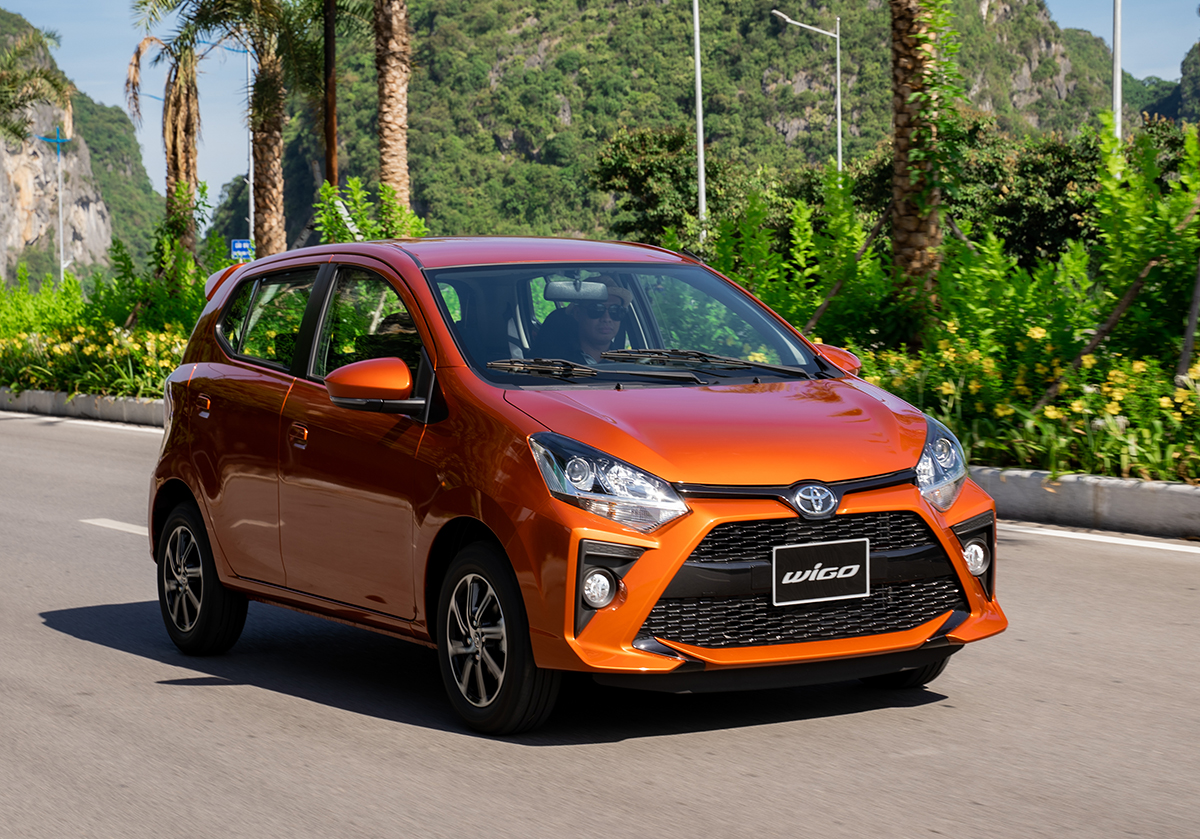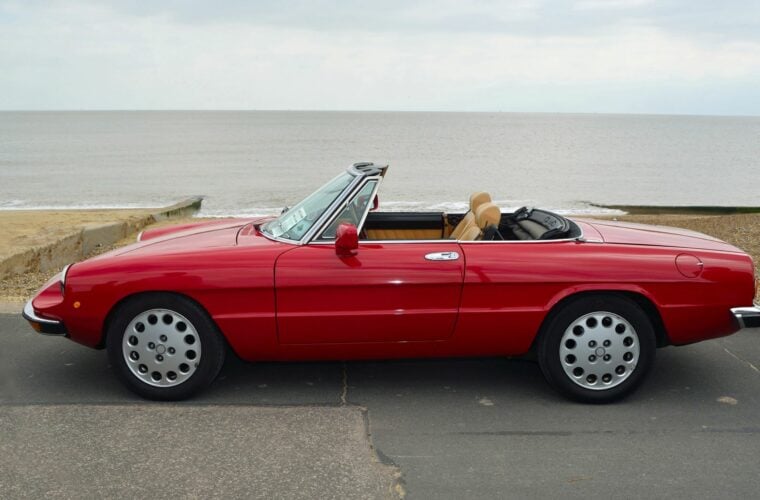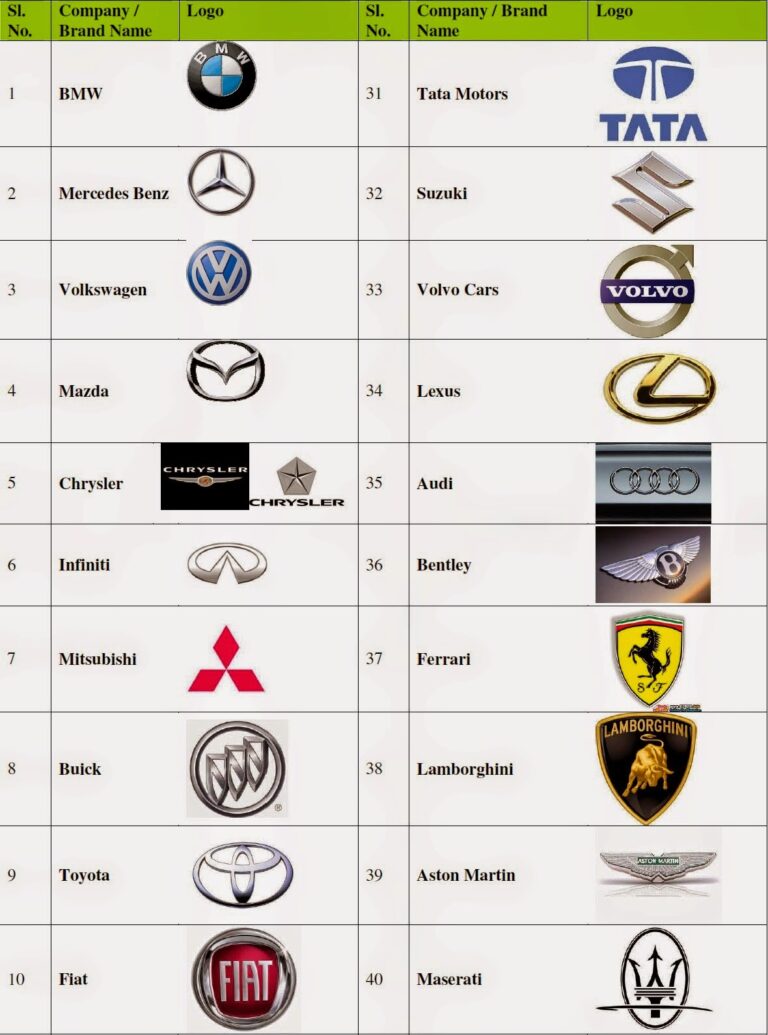What Is The Cheapest Brand New Car In America?
What Is The Cheapest Brand New Car In America? cars.truckstrend.com
In an era of rising vehicle prices and evolving consumer preferences, the quest for the most affordable brand new car in America has become more challenging, yet more critical, than ever. For many, a new car represents not just a mode of transportation, but a significant financial commitment. Understanding what constitutes the "cheapest" vehicle goes beyond the initial sticker price, encompassing a holistic view of ownership costs, features, and long-term value. This comprehensive guide will navigate the current landscape of entry-level automobiles, identifying the top contenders and providing essential insights for budget-conscious buyers seeking reliable, brand-new transportation without breaking the bank.
The Current Landscape of Affordable Cars
What Is The Cheapest Brand New Car In America?
The automotive market has undergone significant shifts in recent years. Manufacturers have increasingly focused on producing SUVs, crossovers, and trucks, which generally command higher profit margins. This trend, coupled with stricter safety regulations, the integration of advanced technology, supply chain disruptions, and inflationary pressures, has led to a noticeable decline in the availability of truly "cheap" cars. Many models that once served as entry points for brands have either been discontinued or seen their prices climb substantially.
Despite this trend, a select few models remain committed to affordability, offering a lifeline to buyers with strict budget constraints. These vehicles often prioritize fundamental transportation needs over luxurious amenities or high-performance capabilities, making them perfect for urban commuters, new drivers, or anyone seeking a no-frills, dependable ride.
Identifying the Contenders: Who Sells the Cheapest Cars?
When it comes to the absolute lowest starting price for a brand new car in the United States, one model consistently emerges at the top: the Mitsubishi Mirage.
The Reigning Champion: Mitsubishi Mirage
The Mitsubishi Mirage holds the title for the cheapest brand new car in America. Available as both a compact hatchback and a sedan (Mirage G4), the Mirage’s primary appeal lies squarely in its ultra-low MSRP, excellent fuel economy, and a robust warranty.
- Starting MSRP (as of early 2024): Approximately $16,775 (for the ES Hatchback)
- Engine: 1.2-liter 3-cylinder engine (78 horsepower)
- Transmission: Continuously Variable Transmission (CVT) is standard on most trims, a 5-speed manual is available on the base ES Hatchback and G4.
- Fuel Economy: Among the best for non-hybrid gasoline cars, often achieving 36 MPG city / 43 MPG highway.
- Warranty: Backed by Mitsubishi’s impressive 10-year/100,000-mile powertrain limited warranty and 5-year/60,000-mile new vehicle limited warranty, providing significant peace of mind.
- Key Features (Base Model): Typically includes a 7-inch smartphone-link display audio system, Apple CarPlay/Android Auto compatibility, automatic climate control, and basic safety features like multiple airbags and active stability control.


Pros of the Mirage: Unbeatable price, exceptional fuel efficiency, long warranty, compact size for easy parking.
Cons of the Mirage: Underpowered engine, basic interior materials, limited cargo space in the hatchback, modest acceleration.
Other Notable Affordable Options (Just Above the Mirage)
While the Mirage holds the crown for the lowest starting price, several other vehicles offer compelling value and might be a better fit for those willing to spend a little more for added features, power, or space.

- Nissan Versa: Often the second-cheapest, especially its manual transmission variant. It offers a more refined ride, a slightly more spacious interior, and a bit more power than the Mirage.
- Starting MSRP: Around $16,130 (S with manual transmission); $17,800 (S with CVT).
- Kia Forte / Hyundai Elantra: These compact sedans from the Korean automakers often compete aggressively on price in their base trims, hovering around the $20,000 mark. They offer significantly more space, power, and technology than the Mirage or Versa, making them excellent value propositions for their class.
- Starting MSRP: Around $19,990 (Kia Forte LX); $21,650 (Hyundai Elantra SE).
- Hyundai Venue: A subcompact SUV/crossover that offers a slightly higher driving position and SUV styling at a car-like price.
- Starting MSRP: Around $19,800 (SE).
Beyond the Sticker Price: Understanding True Cost of Ownership
Identifying the cheapest brand new car isn’t just about the Manufacturer’s Suggested Retail Price (MSRP). Savvy buyers understand that the true cost of ownership extends far beyond the initial purchase price. Several ongoing expenses contribute to the total cost of owning a vehicle over its lifespan.
- Fuel Efficiency (MPG): A car’s fuel economy significantly impacts your wallet over time. Vehicles like the Mitsubishi Mirage excel here, potentially saving you hundreds or even thousands of dollars in gas money compared to less efficient models.
- Insurance Costs: Insurance premiums vary widely based on the vehicle, your driving record, location, and coverage type. Generally, cheaper, less powerful cars tend to have lower insurance rates, but it’s crucial to get quotes before purchasing.
- Maintenance and Repair Costs: Research a car’s long-term reliability and the typical cost of parts and labor. Brands with a strong reputation for dependability and readily available, affordable parts (like many Asian manufacturers) can save you money down the line. The length and comprehensiveness of the warranty also play a significant role here.
- Depreciation: This is the loss of a car’s value over time. While all new cars depreciate, some hold their value better than others. Generally, entry-level cars might depreciate faster in terms of percentage, but their lower initial cost means the absolute dollar amount lost might be less.
- Taxes and Fees: Don’t forget sales tax, registration fees, title fees, and the non-negotiable destination charge (also known as the freight charge) that’s added to the MSRP. These can add several hundred to over a thousand dollars to the final price.
What You Get (and Don’t Get) in a Cheapest Car
When purchasing the cheapest brand new car, it’s essential to set realistic expectations. These vehicles are designed to provide basic, reliable transportation and will not offer the luxury, performance, or cutting-edge technology found in more expensive models.
What You Typically Get:
- Essential Safety Features: Modern vehicles, even the cheapest, are required to meet stringent safety standards. This includes multiple airbags, anti-lock brakes (ABS), electronic stability control (ESC), and often a rearview camera. Some may even offer basic driver-assist features like automatic emergency braking (standard on some Mirage trims).
- Basic Comfort and Convenience: Air conditioning, power windows and locks, and a standard audio system (often with Bluetooth connectivity) are usually included.
- Excellent Fuel Economy: Smaller engines and lighter curb weights contribute to impressive MPG figures, making them economical to run.
- Manufacturer’s Warranty: A significant advantage of buying new is the factory warranty, which covers defects for a set period, providing peace of mind. Mitsubishi, in particular, offers an industry-leading warranty.
What You Typically Don’t Get:
- Powerful Performance: Engines are designed for efficiency, not speed. Acceleration will be modest.
- Premium Interior Materials: Expect durable, basic plastics and cloth upholstery rather than soft-touch surfaces or leather.
- Advanced Infotainment: While Apple CarPlay/Android Auto might be available, touchscreens will be smaller, and navigation systems are often absent.
- Sophisticated Driver-Assist Technologies (ADAS): Features like adaptive cruise control, lane-keeping assist, blind-spot monitoring, or surround-view cameras are often unavailable or limited to higher, more expensive trims.
- Spaciousness: These are generally compact or subcompact vehicles, meaning rear passenger room and cargo capacity will be limited compared to larger cars or SUVs.
- Luxury Features: Heated seats, sunroofs, premium sound systems, or advanced climate control are typically not found in base models.
Practical Advice for Buying the Cheapest New Car
Purchasing any car, especially a budget-friendly one, requires careful consideration.
- Do Your Research: Beyond price, look into reliability ratings, owner reviews, and long-term maintenance costs for the models you’re considering.
- Test Drive Thoroughly: Don’t just take it around the block. Drive on highways, city streets, and parking lots to assess acceleration, braking, handling, and comfort.
- Understand Trim Levels: The advertised "cheapest" price almost always refers to the base model. Higher trims offer more features but also increase the price significantly. Stick to the base if absolute affordability is your goal.
- Negotiate the Price: While there might be less room to negotiate on already low-priced cars, it’s always worth trying to get a few hundred dollars off the MSRP. Focus on the "out-the-door" price.
- Explore Financing Options: Compare interest rates (APRs) from different lenders (dealerships, banks, credit unions) to secure the best loan terms. A higher interest rate can quickly negate any savings from a low purchase price.
- Beware of Add-Ons: Dealerships often try to upsell protective coatings, extended warranties (beyond factory), or accessories. Decline anything you don’t genuinely need or can get cheaper elsewhere.
- Factor in Destination Fees: This mandatory charge covers the cost of transporting the vehicle from the factory to the dealership and is added to the MSRP. It’s non-negotiable but important to include in your budget.
- Get Insurance Quotes: Before you sign any papers, obtain insurance quotes for the specific model you intend to buy. Insurance can be a substantial ongoing cost.
- Consider Certified Pre-Owned (CPO): If your budget is extremely tight, a Certified Pre-Owned vehicle might offer better value. CPO cars are used vehicles that have undergone rigorous inspections and come with an extended manufacturer’s warranty, offering new-car peace of mind at a used-car price.
Price Table: What Is The Cheapest Brand New Car In America (As of Early 2024)
| Make | Model | Body Style | Starting MSRP (Approx.) | Key Features / Notes | Engine/MPG (Approx.) | Warranty (Basic/Powertrain) |
|---|---|---|---|---|---|---|
| Mitsubishi | Mirage ES | Hatchback | $16,775 | Cheapest new car, excellent MPG, long warranty. Basic interior. | 1.2L 3-cyl (78hp) / 36/43 MPG | 5yr/60k mi / 10yr/100k mi |
| Nissan | Versa S | Sedan | $16,130 (Manual) | More refined than Mirage, manual base. Better ride. | 1.6L 4-cyl (122hp) / 27/35 MPG (Manual) | 3yr/36k mi / 5yr/60k mi |
| Nissan | Versa S | Sedan | $17,800 (CVT) | Automatic option for base Versa. | 1.6L 4-cyl (122hp) / 32/40 MPG (CVT) | 3yr/36k mi / 5yr/60k mi |
| Hyundai | Venue SE | Crossover | $19,800 | Smallest Hyundai SUV, higher driving position. | 1.6L 4-cyl (121hp) / 29/33 MPG | 5yr/60k mi / 10yr/100k mi |
| Kia | Forte LX | Sedan | $19,990 | Good value for a compact sedan, more space/power. | 2.0L 4-cyl (147hp) / 29/39 MPG | 5yr/60k mi / 10yr/100k mi |
| Chevrolet | Trax LS | Crossover | $21,495 | Recently redesigned, larger subcompact SUV. | 1.2L Turbo 3-cyl (137hp) / 28/32 MPG | 3yr/36k mi / 5yr/60k mi |
Note: Prices are Manufacturer’s Suggested Retail Price (MSRP) and do not include destination charges, taxes, title, registration, or dealer-added accessories. Prices are subject to change by the manufacturer.
Frequently Asked Questions (FAQ)
Q1: Is the cheapest brand new car safe?
A1: Yes. All brand new cars sold in the U.S. must meet rigorous federal safety standards, regardless of their price point. They come equipped with essential safety features like multiple airbags, anti-lock brakes, and electronic stability control. Some may even include basic driver-assist features.
Q2: Are there any hidden costs when buying the cheapest new car?
A2: Yes, several. The advertised MSRP does not include the mandatory destination charge (freight), sales tax, registration fees, and title fees. Dealerships may also try to add optional accessories or extended warranties, which can significantly increase the final price. Always ask for the "out-the-door" price.
Q3: Will the cheapest car last a long time?
A3: With proper maintenance and care, even the cheapest new cars can be very reliable and last for many years. Manufacturers like Mitsubishi and Hyundai/Kia offer excellent warranties, indicating their confidence in the durability of their vehicles. Longevity largely depends on how well you follow the maintenance schedule.
Q4: Is it better to buy a cheap new car or a used car?
A4: This depends on your priorities and budget. A new car offers peace of mind with a full warranty, no prior owner history, and the latest features (even if basic). A used car, especially a Certified Pre-Owned (CPO) one, can offer more features or a larger vehicle for the same price as a base new car, but with some mileage and potentially a shorter warranty.
Q5: Can I get good financing on a cheap car?
A5: Yes, you can. Loan eligibility and interest rates (APR) depend on your credit score, income, and the loan term. While the total loan amount will be lower, ensure you compare offers from different lenders (dealerships, banks, credit unions) to get the most favorable terms.
Q6: Do cheap cars have good fuel economy?
A6: Often, yes. To keep costs down, manufacturers typically equip these cars with smaller, more efficient engines and lighter chassis. This usually translates to excellent fuel economy, making them very economical to run day-to-day. The Mitsubishi Mirage is a prime example of this.
Conclusion
The quest for the cheapest brand new car in America leads directly to the Mitsubishi Mirage, a vehicle that steadfastly holds its ground as the most affordable entry point into new car ownership. While it represents the ultimate in budget-conscious transportation, it’s crucial for buyers to look beyond just the sticker price. Understanding the true cost of ownership, including fuel, insurance, and maintenance, is paramount for long-term financial satisfaction.
Ultimately, buying the cheapest brand new car means setting realistic expectations. These vehicles are designed for practicality, efficiency, and fundamental reliability, not luxury or high performance. For those seeking dependable, no-frills transportation backed by a factory warranty, the current market still offers viable, cost-effective solutions that deliver essential mobility without demanding a hefty financial sacrifice.




